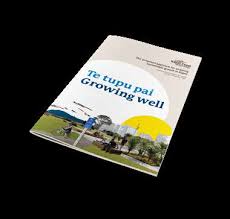
Kāpiti Mayoral candidate Rob McCann is excited that our region has recognised the enormous housing need on the Kāpiti Coast and progressed the proposed District Plan Change Two (PC2).
He says the plan change is required under Government legislation and has supercharged KCDC’s Growing Well Strategy. While council initially attempted to focus intensification in town centres and transport hubs, the Government has required Tier One Councils to allow land owners to build up to three properties, three stories high.
“Today’s vote gives effect to the National Policy Statement on Urban Development and Medium Density Residential Standards, potentially enabling an additional 164,000 dwellings in Kāpiti,” says Kāpiti Mayoral candidate Rob McCann.
The proposed plan change will now go out for public consultation with hearings by an Independent Hearings Panel.
“Council needs to be an enabler,” says Mr McCann. “Too often we’re seen as getting in the way of development. Across New Zealand, councils have unfortunately helped to create the housing crisis because land hasn’t been released for building houses, and intensification has been actively discouraged through special character rules which began to develop across the country in the 1970s.
“Our Housing Needs Assessment revealed stories of how market conditions are forcing residents from their homes and out of the district. We know that house prices have increased nearly four times faster than household incomes and rents 40% faster than household incomes between 2001 and 2021.
“We have 190 people on the public waiting list and 50 adults and 40 children living in emergency housing and over 200 in boarding houses. Over 88% of renters are unable to affordably purchase a dwelling at the lower quartile house price and only 5% could affordably service a mortgage.
“The changes that PC2 will usher in will help our region to deal with the housing crisis, ensuring that more houses are built to house existing residents, and that the realisable housing capacity is lifted to cater for the expected 32,000 people moving here in the next 30 years.
“While I don’t expect this to significantly drop housing prices, it may help stabilise prices somewhat and it will certainly increase the diversity of houses and provide some choice for potential homeowners.
“This is a significant step forward for a region that is shaking off beach town growing pains. We’ve known it’s time to start planning for growth and taking control of our future, and that means having a community where residents can afford rentals and homes.
“I’d like to thank all the staff that have worked on this plan and the community for engaging in one of the widest consultations – our Growth Strategy. This is a huge step forward for the region. One that focuses on growing well, looking after our environment, supporting Papakainga Housing and enabling our region to sustainably grow.”













































